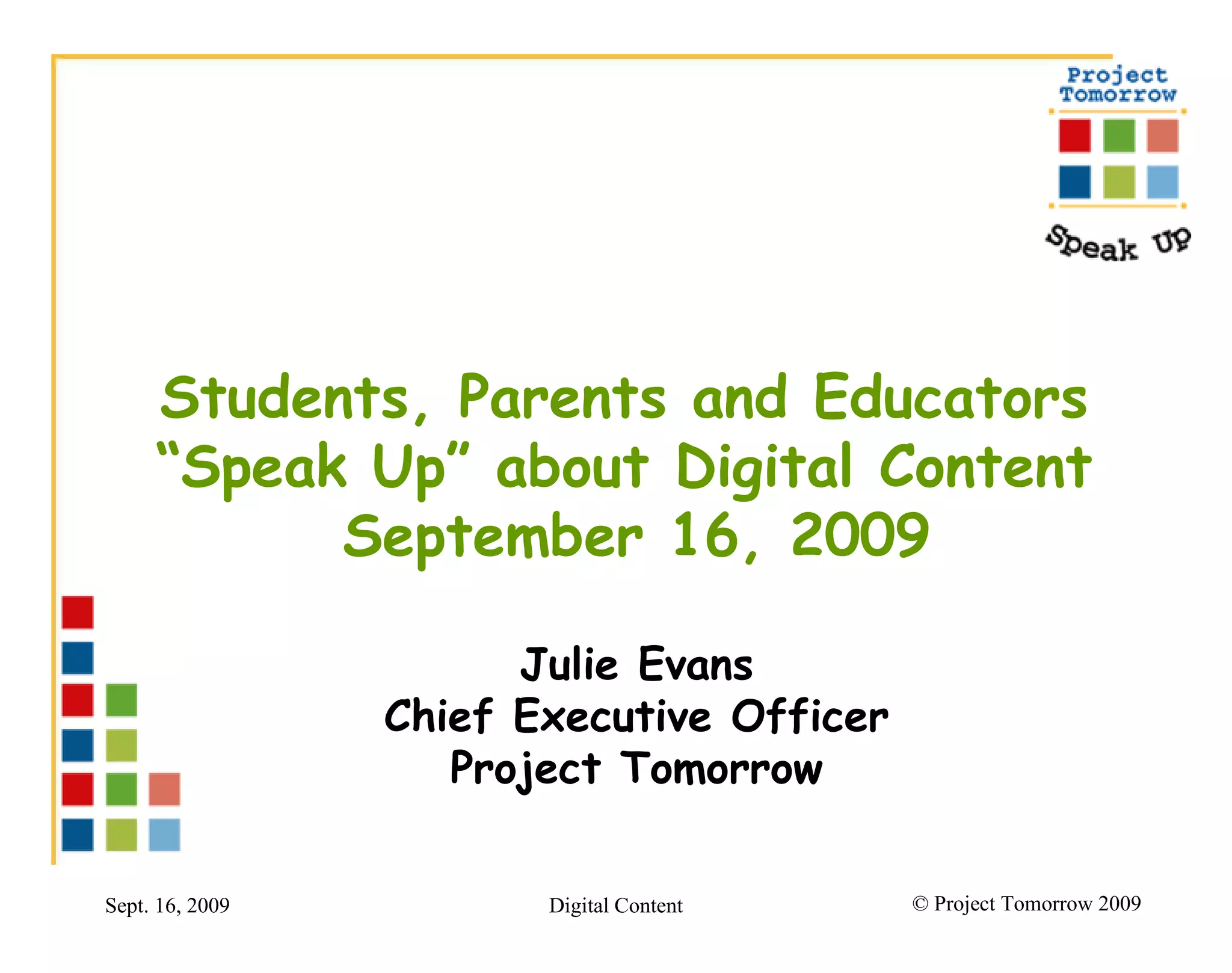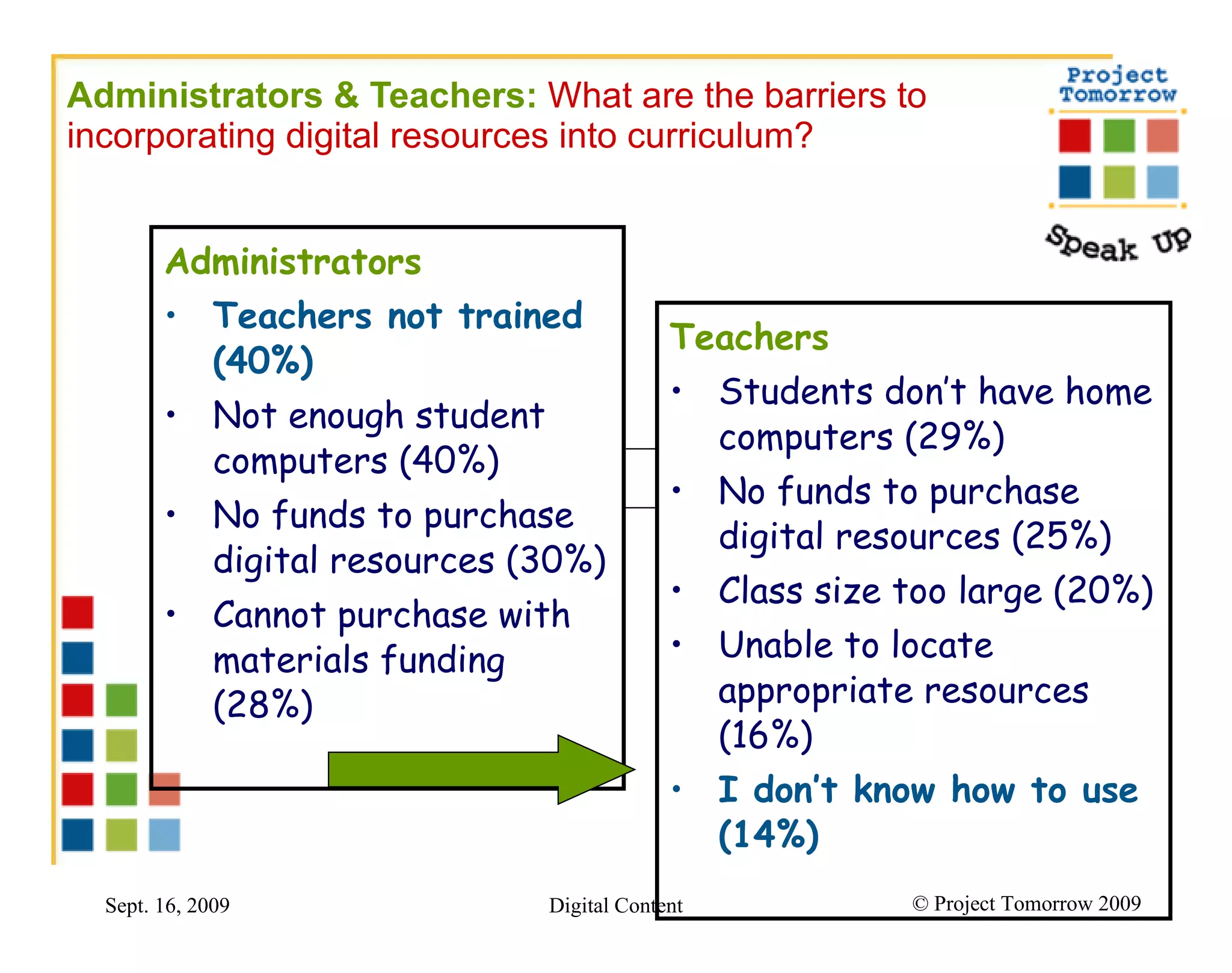The document provides an agenda and overview for a webinar on digital content and the Speak Up research project. It introduces the presenters and discusses key findings from the 2008 Speak Up data on how K-12 students are using technology for schoolwork and their aspirations for greater use. Students report dissatisfaction with limits on technology use at school and desire more flexibility to use their own devices and access resources remotely.



















































![More data and reports are available on our website: www.tomorrow.org Julie Evans Project Tomorrow [email_address] 949-609-4660 x15 Copyright Project Tomorrow 2009. This work is the intellectual property of the author. Permission is granted for this material to be shared for non-commercial, educational purposes, provided that this copyright statement appears on the reproduced materials and notice is given that the copying is by permission of the author. To disseminate otherwise or to republish requires written permission from the author. Thank you!](https://image.slidesharecdn.com/thejournalsu08digitalcontentfinal0916-100211150033-phpapp02/75/Digital-Content-52-2048.jpg)


![About this Webcast This event will be available for on-demand viewing within 24 hours. You will be notified by email when the archive is ready. For additional information about this or other T.H.E. Journal Webcasts, please contact: Kanoe Namahoe, e-content producer [email_address]](https://image.slidesharecdn.com/thejournalsu08digitalcontentfinal0916-100211150033-phpapp02/75/Digital-Content-55-2048.jpg)
